What Star Trek: Lower Decks Is Getting Right And Wrong So Far
This article is more than 2 years old
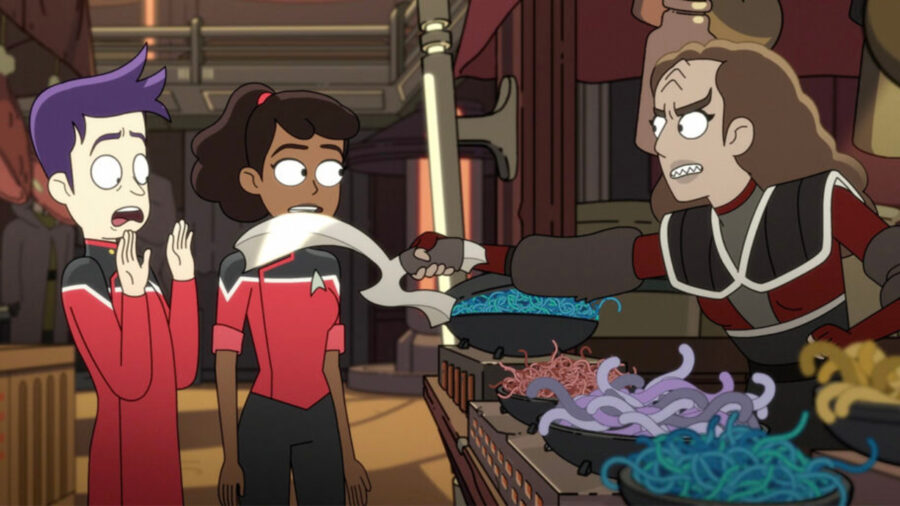
Star Trek: Lower Decks has proven to be a much-needed surprise in this new era of Star Trek. So far, expecting the show to be good has turned out to be the right method of thinking. The second episode, “Envoys”, has shown where this newest incarnation has its head at, and things are mostly looking up as the show progresses.
Let’s take a look at exactly what Star Trek: Lower Decks is getting correct about being a Star Trek show, and the few things it still needs to improve upon.
Star Trek: Lower Decks Has Great Characters
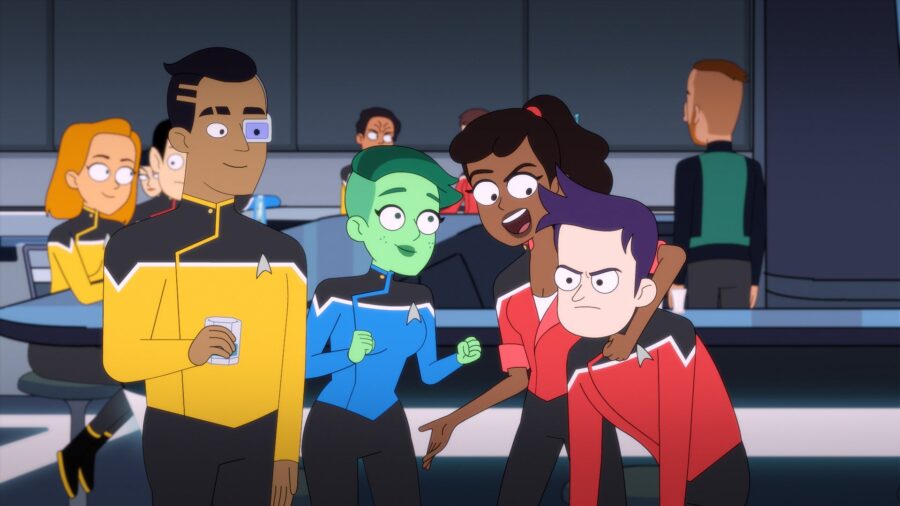
We often get wrapped up in discussing the bigger ideas of Star Trek shows, and that can distract us from honing in on what makes any story worth following: the characters. Star Trek: Lower Decks has done in two episodes what a lot of modern Star Trek has failed to do in its entire run: make good characters. “Second Contact” did its job by establishing the core crew and their baseline personality types. “Envoys” expands upon those foundations by further exploring what makes these characters who they are.
So, who are they? The pairing of Ensign Mariner and Ensign Boimler has proven to be the show’s attempt at showcasing two different approaches to both Star Trek characters and Star Trek fans. Mariner is the roguish, shoot-from-the-hip type of lead that also embodies the fans that love the action and adventure of the Trek franchise. In “Envoys”, Mariner is woken up from an “awesome dream” that’s a reference to Star Trek II: The Wrath of Khan, the Star Trek entry that has become the pinnacle of the series’ take on action-adventure storytelling. We know Mariner is going to be able to fight or finagle her way out of most situations as she does in “Envoys” – the moment where she stops a bar fight by buying everyone the next five rounds is a wonderful moment – and it’s going to be interesting when Star Trek: Lower Decks throws a problem at her that she can’t solve on her own.
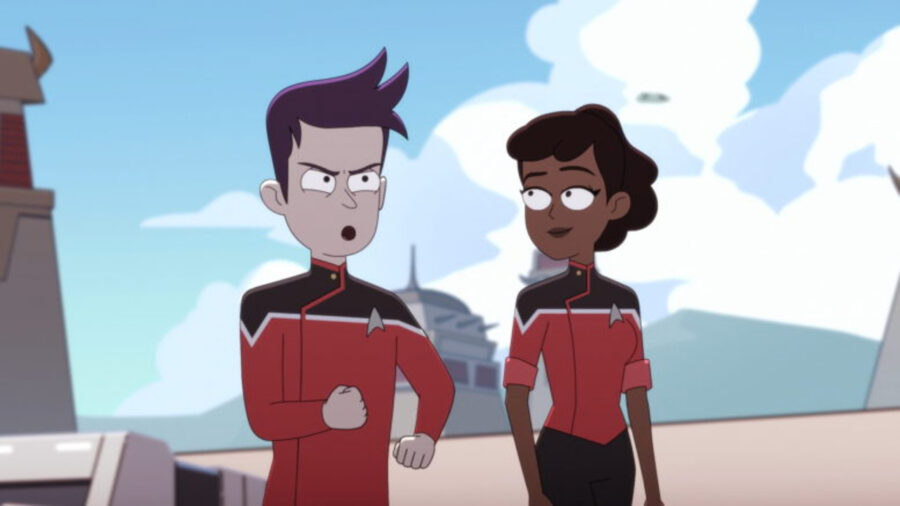
Boimler: “Stop it! It’s to conserve energy. Section 31 does this.”
Meanwhile, Boimler is the ultimate Trekkie nerd. He’s excited to take on an escort mission and even gets dolled up in his dress uniform to do so. But, for all his book-smarts and obsession with protocol, he’s wildly inept when thrown into the real conflicts that the Trek universe presents. Pairing him and the ultra-capable and well-traveled Mariner together is perfect as they end up bringing out the best in each other. When Boimler realizes his incompetence and threatens to leave Starfleet to work on a research asteroid (the “lamest thing he could do” according to Mariner), it makes Mariner realize how much Starfleet means to Boimler. So, she sets up a goofy little encounter with a Ferengi to boost Boimler’s morale and it’s the exact kind of smart character development Star Trek: Lower Decks needs.
Meanwhile, the B-story involves Ensign Rutherford trying out for every department on the USS Cerritos in order to make time in his schedule to watch a pulsar with Ensign Tendi. While Tendi doesn’t get a ton of development here – she’s still the same as she was in the pilot: excited and in awe of space – we do learn more about Rutherford and his relationship with Starfleet (spoiler: he really loves being in Jefferies tubes).
As he requests for a transfer out of engineering, he’s expecting conflict from his superior officer, Lt. Com. Andy Billups, but his decision is instead met with warm acceptance from everyone in engineering. The same joke is pulled when Rutherford decides not to join the security department and he’s again met with positive support. It’s a great reminder that Starfleet is supposed to be somewhere that represents the best possible outcome as far as workplace dynamics are concerned. That’s Star Trek: Lower Decks showing its heart for the property.
Speaking of loving Star Trek…
Star Trek: Lower Decks Knows Its Stuff
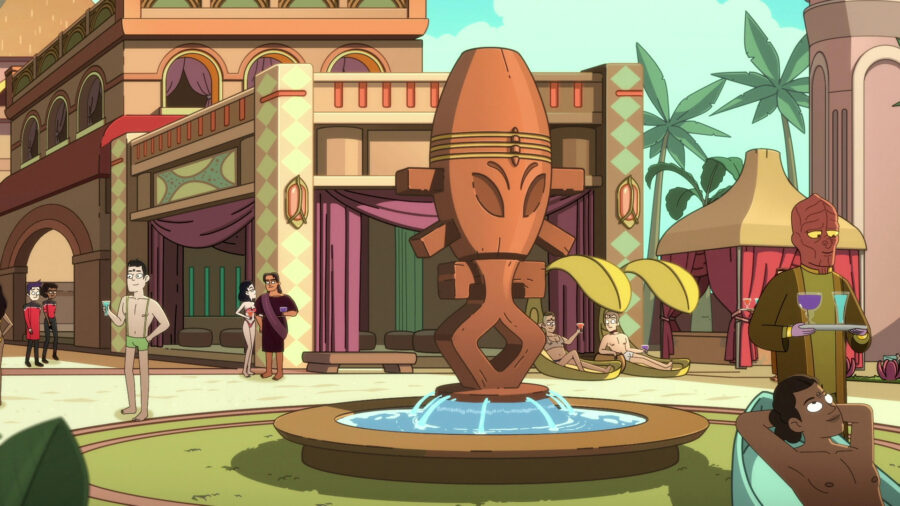
It was expected that a Star Trek animated comedy series would be littered with Easter eggs for hardcore fans. Star Trek: Lower Decks is definitely scratching that itch and then some, but it’s not just loading the frame with visual gags for eagle-eyed fans. …Well, it is doing that and doing it exceptionally well, but it’s not being flippant with it. It’s doing so in a way that shows a deep knowledge of Star Trek.
For example, Boimler and Mariner take a detour into Little Risa, a small district on Tulgana IV that mimics the culture of the pleasure planet Risa. In the courtyard of this district is a large fountain with a horga’hn as its centerpiece. This detail will likely fly over the heads of most viewers, but anyone with a good memory of Star Trek: The Next Generation will get an instant kick out of this and how it helps set the mood for the following scene.
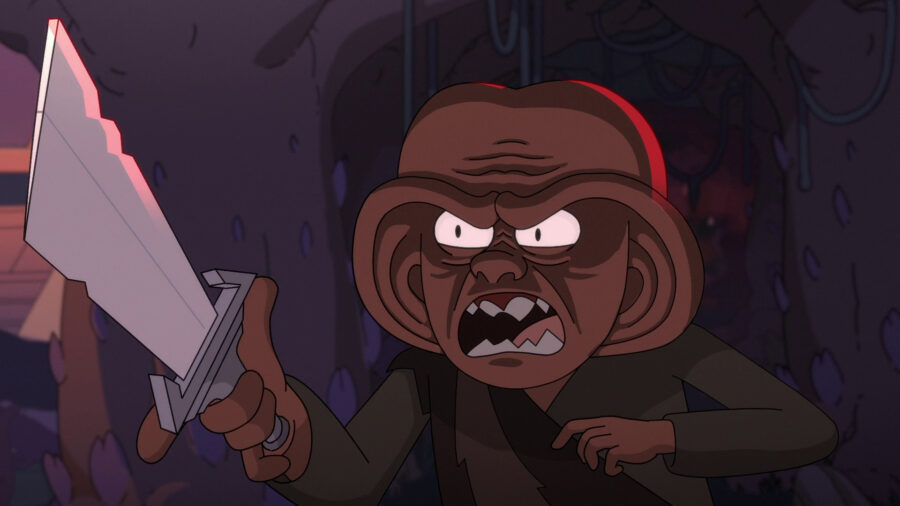
And that’s something Star Trek: Lower Decks is doing extremely well: understanding how the world of Star Trek can be used to best amplify the stories it wants to tell and what it wants to put its characters through. The Ferengi bit that was mentioned earlier even uses this to throw us off a tad by presenting a stereotyped riff on the infamous alien race – much like how they were originally presented in Star Trek: The Next Generation before being fleshed out in Star Trek: Deep Space Nine – only to reveal a deeper and more complicated understanding of the featured Ferengi.
More than any incarnation of Star Trek since the franchise was effectively rebooted in 2009, Star Trek: Lower Decks is the first thing that feels like it belongs in the Star Trek universe. Yes, its adherence to a specific era in the Trek timeline helps that, but it’s clear that this decision is not purely motivated by fan-service. The show gets Star Trek in a way no other iteration from the 2009 reboot onward has.
That doesn’t mean it isn’t without room for improvement…
Mariner Needs Fine Tuning
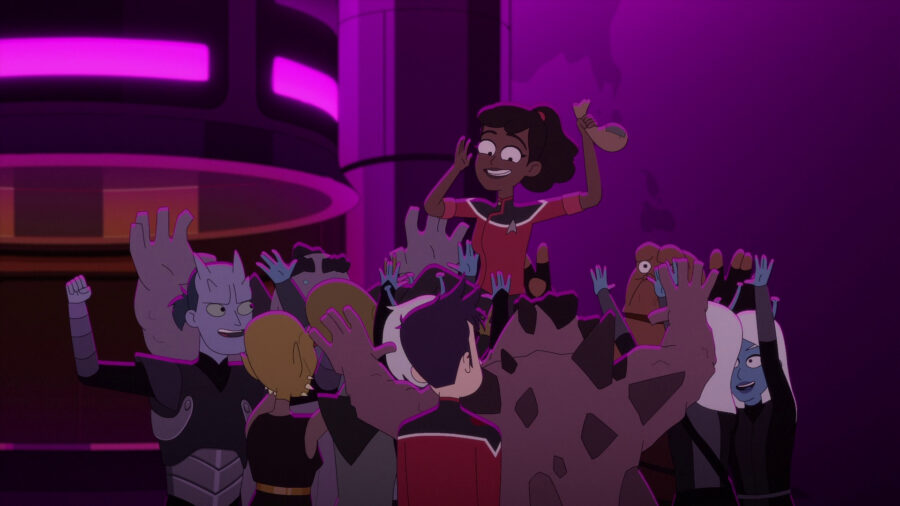
It’s still so early in Star Trek: Lower Decks‘ run that this might end up being solved by season’s end, but Beckett Mariner is a character that could be a dealbreaker moving forward. There are two factors to her character that need to be honed. The first is how she’s used for comedic effect. Many fans were put off by her presence in the advertising for Star Trek: Lower Decks and that’s because the trailers have often highlighted her most deliberately obnoxious moments. She’s a character who thumbs her nose at all the decorum and rigidity of Starfleet and is able to get away with her behavior thanks to being the daughter of two high-ranking Starfleet officials.
Unfortunately, this means that Mariner is an actively annoying presence at times. When it’s used to highlight the silliness of certain Starfleet attitudes as they apply to the characters – for example, she makes fun of Boimler putting on his dress uniform for an escort mission – this character trait works. But, there are moments where the joke pushes too far and goes from being irritating but constructive to legitimately aggravating. The much-maligned “blast shield song” is a perfect illustration of this.
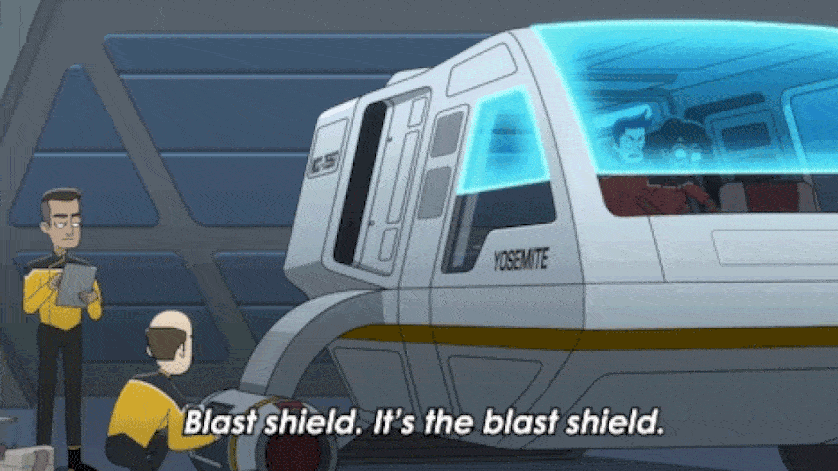
And while Mariner’s satirical outlook is hit and miss when it comes to comedy, it’s also proving to pose an eventual problem for her as a character: what are her personal stakes going to be? The other main characters have desires that fit within their Starfleet professions, but Mariner is mostly just here to have a good time. It’s inevitable that her conflict will be enforced by her relationship with her mother, Captain Carol Freeman, but parent/child tension can’t be the only thing motivating Mariner’s turmoils. The trajectory seems to be that she would be great at command but lacks the behavior necessary to fulfill that position. That’s good conflict and hopefully, Star Trek: Lower Decks begins putting her in situations where her behavior actually causes serious problems for her crewmates.
If Mariner simply remains the mega-confident and skilled rebel for too many more episodes, it’s possible her character will start to feel stagnant. Here’s hoping the show finds some good curveballs to throw at her.
Otherwise, Star Trek: Lower Decks is continuing to be the most exciting piece of serialized Trek since Star Trek: Deep Space Nine. If it can maintain course (heh heh), things are only looking up from here.












